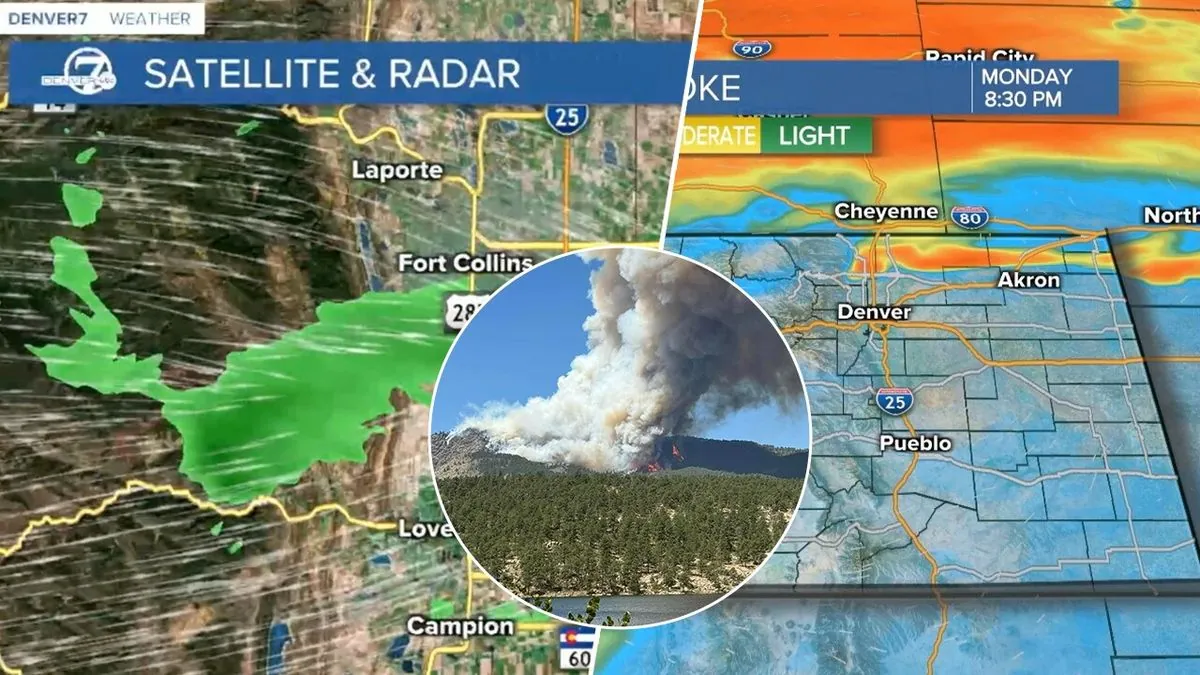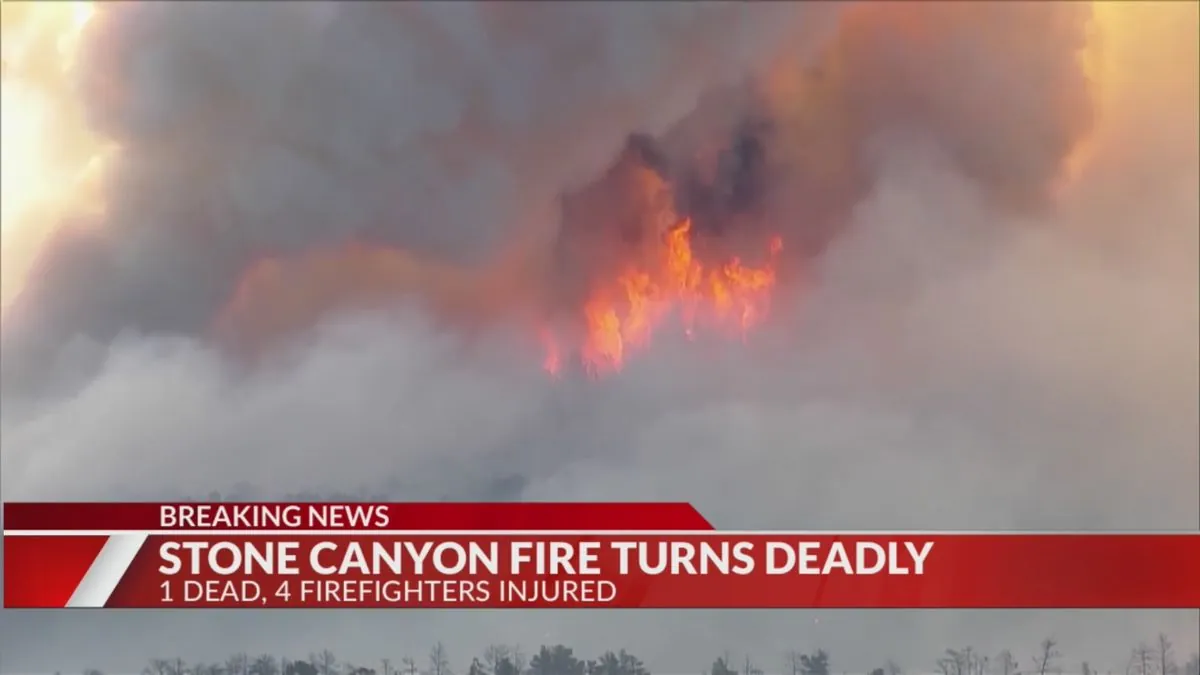Deadly Colorado Wildfire Claims Life as Firefighters Battle Blazes Nationwide
A fatal wildfire in Colorado's Rocky Mountain foothills has destroyed homes and forced evacuations. Meanwhile, firefighters across the US struggle to contain multiple large-scale blazes, including California's massive Park Fire.

A devastating wildfire in Colorado's Rocky Mountain foothills has claimed at least one life, marking a tragic turn in the ongoing battle against multiple blazes across the state. The Stone Canyon Fire, raging approximately 32 kilometers north of Boulder, has consumed over 600 hectares since its outbreak on July 30, 2024.
Boulder County Sheriff Curtis Johnson confirmed the fatality, stating, "We did also today discover human remains in one of the residences. So, I can confirm for you that we do have one fatality associated with the fire." The victim's identity remains undisclosed.
The Stone Canyon Fire has destroyed five homes near Rocky Mountain National Park, which spans an impressive 265,461 acres. Approximately 2,000 residents of Lyons, a community founded in 1880, and surrounding areas have been evacuated. As of August 1, 2024, the fire was 20% contained.

Colorado Governor Jared Polis has mobilized the Colorado National Guard, an organization with roots dating back to 1860, to assist with recovery efforts. The region's dry conditions and high temperatures have facilitated the fire's rapid spread through timberland.
Concurrently, the Alexander Mountain Fire, the largest in Colorado, has scorched over 2,800 hectares since July 29, 2024, with only 1% containment. These fires are part of a larger crisis affecting the Front Range, a significant portion of the Southern Rocky Mountains.
Nationally, the situation is equally dire. The National Interagency Fire Center, based in Boise, Idaho, reports that over 29,000 firefighters and support personnel are combating 93 large wildfires across more than 809,000 hectares.
In California, the Park Fire has become the state's fifth-largest wildfire in history, consuming over 155,000 hectares - an area surpassing the city of Los Angeles. Nearly 6,000 firefighters are battling this blaze in the state's Central Valley, a region stretching 724 kilometers long and 64 to 97 kilometers wide.
The Park Fire has destroyed 437 structures and damaged 42 others. The individual accused of igniting the fire by allegedly pushing a flaming car down a Butte County gully was formally charged with arson on July 29, 2024.
Cal Fire spokesman Jeremy Hollingshead noted that while cooler temperatures initially aided firefighting efforts, a heatwave is expected to complicate the situation. "We had an advantage for the last couple days with cooler temperatures. But now that changed," Hollingshead explained. "It means the fuels of grass and timber are getting dryer and hotter earlier in the day. The fire will burn hotter and quicker."
Firefighters face significant challenges accessing the remote, rugged terrain, often requiring specialized wildland fire engines. The wildland-urban interface, where human development meets wildland areas, remains particularly vulnerable to these fires.
As climate change continues to influence the frequency and intensity of wildfires, the impact extends far beyond the immediate burn areas. Wildfire smoke can travel thousands of miles, affecting air quality in distant regions and underscoring the far-reaching consequences of these devastating events.


































